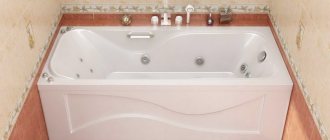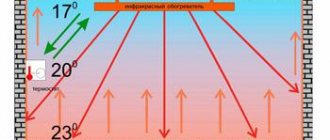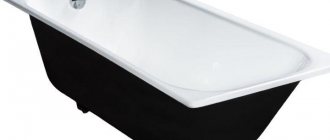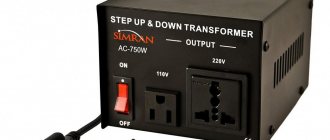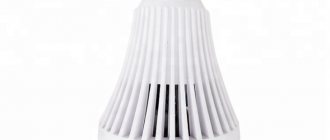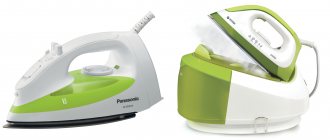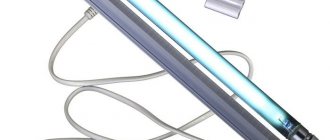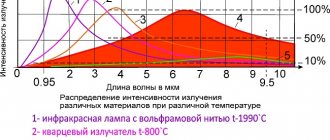How to choose a ceiling infrared heater
Infrared ceiling devices are installed in residential buildings, open areas, greenhouses and factories.
What types of IR devices are there?
IR devices for outdoor and indoor installation are available on the market. Manufacturers produce household and industrial models that differ in appearance, heating temperature and power. There are samples for rooms with high humidity levels (saunas) and with explosion protection.
Ceiling-type infrared heaters are:
- with and without thermostat;
- gas;
- electrical;
- with open and closed coolant.
There are differences in the wavelength emitted by the device:
- shortwave, intended for rooms 6 m high;
- medium wave – for objects 3-6 m high;
- long-wave – installed in rooms up to 3 m high.
Heating elements are:
- carbon (heating occurs due to carbon threads);
- quartz (heating is carried out by a tungsten filament);
- ceramic (the body of such a device does not heat up);
- tubular (heating elements);
- halogen (the coolant is an inert gas located in the tube).
Manufacturers produce low- and high-temperature models. For small rooms, choose dark samples (they do not glow when heated) with low temperatures. For large production areas, light type heaters are chosen. They are used in stadiums, warehouses, and open trading floors.
For greater efficiency of the ceiling-type IR heater, a thermal curtain is installed along with the device. It retains heat and reduces energy losses.
Pros of IR heaters
The efficiency of the devices is 95-98%. The room is heated vertically, in the bottom-to-top direction. Thanks to this, heat fills the room faster, energy consumption is reduced by 5-10% for each degree saved. The operation of IR devices does not require constant human supervision. They are cheap compared to other heating devices. Since ceiling systems are static and contain no moving parts, they require minimal maintenance and no maintenance.
IR heaters also have advantages over other types:
- high heating rate;
- since models of this type do not have fans, they operate silently;
- easy and quick to install;
- do not emit light;
- fireproof;
- it is possible to heat a separate area of the room;
- IR rays have a positive effect on the body.
Minuses
A relatively new type of equipment for heating rooms has a number of disadvantages:
- after switching off, the room cools quickly;
- there is a limitation on the power of the heat flow (if it exceeds 350 W/m², the radiation becomes harmful to the body);
- do not place paintings or objects made of artificial materials in the area of effect of the rays (they can be deformed when heated);
- when purchasing a ceiling device, take into account that the distance from the heating source to the person’s head must be at least 50 cm;
- installation on a ceiling made of materials that are unstable to heat is not allowed.
Subtleties of choice
Depending on the heated area and operating conditions, the number of heaters is calculated. For a small room, one device is installed; for large areas, several are installed. When choosing a model, a number of indicators are taken into account.
- Before choosing a ceiling infrared heater, determine what area it should work on. For industrial, office and warehouse premises with a large area, powerful light-type heaters are chosen.
- An important indicator is the condition of the ceiling. Beams, floors, tension structures must support the weight of the model.
- The ceiling height should ensure normal heat flow.
- Coolant type.
- For installation on the ceiling, choose lightweight models with an aluminum body and film devices.
- The presence of a remote control, an overheating sensor, and a thermostat in the sample. With these devices, servicing the model is simplified.
- Several models are installed over a large area.
If you follow the selection rules, the device will last a long time, and energy consumption will be minimal.
Installation subtleties
Heaters are installed parallel to windows, doors, and external walls. If you plan to install several devices, make calculations to ensure uniform heating of the room.
One heater installed on the ceiling at a height of 2.5 m operates on an average area of 20 m². There are hanging heaters and built-in models on sale.
Which infrared heater to choose
Like any other heater, infrared (IR) is selected based on performance - thermal power.
On average, per 1 sq. m. room should account for 100 W. For colder buildings, and also if the heater is the only source of heating – 120-150 W. And vice versa - if the thermal insulation of the home is good or there are other heat sources, you can choose less efficient equipment (60–80 W per 1 sq. m.).
The performance of IR heaters depends on the type of heating element. It could be:
- Heating element is the most powerful, durable and expensive. Has no visible light, but can make low noises.
- Ceramic heater - heats up and cools down quickly, uses electricity economically, but has a high price. The glow is colorless.
- Carbon (quartz) element - has a higher efficiency than a heating element, but consumes more electricity and has a short service life. Has an orange glow.
- Halogen heater - characterized by the supply of short waves, which are less beneficial for the body, and therefore are suitable only for short-term use. Glows yellow and heats up quickly.
Depending on the design and type of installation, IR heaters can be ceiling, wall or floor mounted. Their cost and performance are also affected by additional options: thermostat, remote control, built-in humidifier and others.
Recommendations: 10 Best Oil Heaters
10 best outdoor heaters
14 Best Gas Heaters
The best infrared ceiling heater with thermostat
Models with thermostats save energy. When installing several devices on the ceiling, use one thermostat per room. The device controls the temperature and, depending on the indicators, turns the heater on or off.
The thermostat can be built-in or remote. Manufacturers produce mechanical and electronic regulators. Mechanical has an accuracy of 0.5˚. The parameter is set manually. The electronic thermostat is equipped with a display that shows operating indicators. The temperature is set remotely, using a button or by touching the display.
The Pion model meets modern customer needs, including low energy consumption and high heat dissipation. The sample has a dispersion angle of 120˚, the body is made of aluminum alloy with powder coating. The color palette is white and wood color. The manufacturer also produces the Peony Lux line. Models differ in color, power, and equipment. Heaters are sold with or without a thermostat and wire.
The Peony Lux 0.4 F model plus thermostat is low-power. It is installed in bathrooms, pantries, bathrooms, hallways.
Characteristics
- power – 400 W;
- voltage – 220V;
- weight – 2.3 kg;
- working height – 1.8-3 m;
- work in winter – 4 m²;
- during the autumn/spring season – 8 m²;
- installed on wood-trimmed ceilings;
- overheating or underheating of the room is excluded;
- The device comes with a German thermostat;
- IP 54 protection.
pros
- The thermostat operates after 1 s;
- temperature adjustment in the range of 5-30˚;
- high quality thermostat made in Germany;
- moisture resistance;
- setting the operating mode for a day or a week;
- light weight.
The downside is low power.
How to choose a ceiling heater
The choice of a specific model and heating method depends on the size of the room and the state of insulation of the house. If the dacha is built according to the classic scheme with two rooms and a small hallway, then it is best to use a combined ceiling heater.
For example, to quickly warm up a house in winter, an infrared propane burner is best suited; its power, which is quite a lot, 5-10 kW, will be enough to heat and dry the room within 10-15 minutes. An electric or infrared heater can achieve the same result in 2-3 hours of operation.
On the other hand, to heat the front door, threshold and corridor, it is better to choose an ultraviolet or infrared device. If the cottage is built from rounded logs or, even more so, timber, then it is best to choose an ultraviolet heater. It will not only maintain the necessary thermal conditions, but will also protect the wooden box from rotting and the spread of fungus.
This is one of the reasons why summer residents prefer to buy ultraviolet heaters. With their help, it is possible to disinfect and preserve not only the wooden box of a country house, but also a bathhouse, and a storage area for vegetables and harvested crops.
Industrial infrared ceiling heaters
To heat a summer house or a small room in a cottage, you can use an industrial heater, for example, the most affordable version of the B12M propane-butane burner. Device power 5.6 kW, direct power from a cylinder with a reducer. More powerful gas and infrared heaters of the GIIAP type, producing up to 10 kW of thermal power, are usually used for heating greenhouses and greenhouses.
Ceiling heater GII-20
Important! It is also possible to heat a dacha or country house; the power of the heat flow is such that the heater must be located at a height of at least 4-5 m on a separate ceiling mount. Otherwise, the floor and furniture will burn.
A simpler option is a standard flameless burner or MIP heater made in Turkey with a power of 3 kW. Gas consumption is 0.4 l/h, which means that a 25-liter cylinder is enough for two days of continuous burning.
Ceiling heaters for home and garden
Different types of country houses require different heating systems. For example, for a timber frame cottage, you can use a simple infrared heater.
Ceiling UV heater in greenhouse
An ultraviolet heater can be purchased as an additional heat source. If a winter greenhouse is attached to the house, then it will be useful to install the device on a ceiling beam for several hours. Ultraviolet light will not lead to melting of the frame film and is guaranteed to support seedlings on cold days, and when combined with an automatic temperature control, it will be indispensable in the most extreme cold.
For stone cottages that do not have winter insulation and heating, it is better to use a gas ceiling heater based on a flameless burner. When handled correctly, its power will easily exceed the capabilities of a wood-burning stove, and the stability and reliability are noticeably higher.
The best film ceiling heater
A film-type infrared device consists of:
- polymer dielectric film;
- heating elements located on the surface of the film;
- wires supplying current;
- reflective screen.
The film consists of a non-woven fabric coated on both sides with a layer of plastic.
Once connected to a power source, the film heats up and emits thermal energy. The heat flux is identical to solar radiation with a wavelength of 9 microns. The reflective film directs the flow of heat into the room. Film-type devices are used as the main or auxiliary heating source.
The Zebra ceiling film heater is popular among consumers due to its high heat transfer and ease of installation.
Characteristics
- mains voltage – 220V;
- maximum power – 200 W/m²;
- weight – 500 g/m²;
- heat transfer – 100%;
- protection level – IP 44;
- thickness – up to 1 mm.
pros
Thanks to its flexible surface, carbon film is used on relief and other complex surfaces. No screed or adhesive base is installed under such a heat emitter. The material is actively used in other areas of activity - drying food, trees, soil in greenhouses. Carbon film is installed in garages, offices, schools, and residential buildings. Also film:
- does not take up much space;
- has temperature control;
- easy to install;
- has a service life of 5 years;
- suitable for installation on columns;
- resistant to voltage surges;
- does not absorb oxygen.
Minuses
- expensive heater;
- suitable only for insulated houses;
- to heat a large room, it is necessary to install a large film or several copies;
- To heat the room evenly, you need to choose the right place for the model.
The best wall-mounted infrared heaters
Wall-mounted heaters also do not take up much space and are suitable for both primary and additional heating of rooms. They can be placed next to your desk or sofa for localized effects.
Hyundai H-HC2-40-UI693 – large heater for spacious rooms
5
★★★★★
editorial assessment
90%
buyers recommend this product
See review▶
High power and increased dimensions make this heater suitable for large rooms. It can be used not only as an additional, but also as the main type of heating. In addition to wall installation, the model also provides for ceiling installation.
Hyundai H-HC2 is suitable for semi-open spaces and can be used as a small thermal curtain. The IR heating element is hidden behind the body, which prevents burns.
The equipment does not emit visible light, operates silently and does not dry out the air. Made in Russia, the homeland of the brand is South Korea.
Advantages:
- High power;
- Quiet operation;
- Hidden heating element;
- Work in semi-open spaces;
- Universal installation.
Flaws:
- No remote control.
The H-HC2-40-UI693 heater from Hyundai is suitable for large residential and non-residential premises; it can be used in apartments, country houses, garages, offices or production.
Timberk TCH AR7 2000 - a high-quality device with economical energy consumption
4.9
★★★★★
editorial assessment
87%
buyers recommend this product
High performance with low electricity consumption are the main advantages of the heater of this model. It is equipped with a reliable, durable heating element, is easily mounted on the wall and does not require constant maintenance.
The device is protected from overheating and can be used when there are no people in the room, as it is protected from fire. A high degree of moisture resistance makes it suitable for rooms with high humidity and poor insulation. The country of origin is China, although the brand is Swedish.
Advantages:
- Cost-effective;
- High performance;
- Overheat protection;
- Resistance to high humidity;
- Power adjustment;
- Small width.
Flaws:
- Thermostat is only available as an option.
For a medium-sized residential or industrial space, the TCH AR7 2000 infrared heater from Timberk is ideal.
Ballu BIH-LW-1.2 – ergonomic model
4.7
★★★★★
editorial assessment
86%
buyers recommend this product
A compact heater from a Dutch manufacturer perfectly copes with its purpose in any room - with low and high levels of insulation.
The built-in quartz lamp quickly heats objects within the range of the device, while emitting a soft orange light comparable to the sun's rays. It is comfortable to be under the heater during the day and evening, but uncomfortable to sleep.
Thanks to the built-in bracket, the tilt of the body can be changed within 5 steps in 15° increments. It can be installed at a height of up to 2.5 m, while it has compact dimensions and does not take up useful space in the room.
Advantages:
- Outdoor performance;
- Tilt bracket included;
- Compact dimensions;
- Fast heating;
- Economical energy consumption.
Flaws:
- Not everyone likes the orange glow.
The BIH-LW-1.2 Ballu heater is suitable for an apartment, cottage, loggia, summer cafe, gazebo and any other indoor or semi-open space.
Thermal phone ERGN 0.4 Glassar – stylish and modern
4.5
★★★★★
editorial assessment
81%
buyers recommend this product
In appearance, this IR heater resembles a plasma TV, but it is intended for local heating of residential premises.
The model is available in white and black colors, organically fitting into most modern interiors. The body is made of glass, which acts as a radiating panel.
During operation, the heater is practically silent and does not produce a visible glow. It is protected from overheating and has a built-in thermostat.
Advantages:
- Stylish design;
- Thermostat;
- Overheat protection;
- No visible glow;
- Slim body.
Flaws:
- Low power.
The ERGN 0.4 Glassar heater from the Russian company Teplofon is suitable for small indoor spaces.
READ ALSO
18 best convectors
Best Electric Ceiling Infrared Heater
Ceramic ceiling IR devices consist of a spiral surrounded by a ceramic shell. They are protected from dust, moisture and temperature fluctuations. Due to the fact that the heating element is closed, it does not oxidize. The service life of such a heater is longer than that of other IR models.
One of the most popular heaters is ECS1 with a spherical working surface .
Characteristics
- device type – dark;
- power – 1,000 W;
- angle of action – 75˚;
- average temperature – 730˚;
- wavelength – 2.9 microns.
pros
- does not light up during operation;
- heats a large area;
- long service life;
- resistant to chemical reagents.
Minuses
- fragile body material;
- the heat source may fail if the heater is shaken vigorously;
- Available only in white version;
- delivery and installation require care not to damage the device and coolant;
- For effective operation, an ECR reflector must be installed.
How do ceiling IR heaters work?
In fact, a standard IR heater consists of a housing, insulation, heating element, reflective screen and radiating plate.
Diagram of the ceiling IR heater
A heating element is fixed in the body, under which there is a reflective screen made of durable foil and a layer of dense mineral wool. And the heating element is fitted with an anodized aluminum profile, which emits heat waves. Cotton wool and foil are needed so that all the energy from the heating element goes into the plate, and not up to the ceiling.
And the more powerful the heater, the more heating elements there are in the body (there may be 2,3,4 or even more).
Please note that the thicker the heating element or the greater their number, the greater the total weight of the device. Accordingly, the load on a certain section of the ceiling will be considerable... Therefore, if you want to purchase such an infrared ceiling heater for your dacha, and the load-bearing capacity of the ceiling is in doubt, then it may make sense to install not one large heater, but several small ones.
Types of ceiling IR heaters
The best ceiling infrared heater for a summer house
, the Russian-made Almak model is best suited . The device has a beautiful body with rounded corners and is easy to install. The manufacturer produces a wide range of products. Depending on the power, the weight, size and price of the device changes. There are samples on sale with a power of 500, 800, 1,000, 1,300, 1,500 W.
Color spectrum:
- white;
- wenge;
- silver;
- beige;
The compact Almak IK-5 model is suitable for installation in a dacha. This is a low-temperature device designed to work in small areas.
Characteristics
- power – 500 W;
- voltage – 220 W;
- winter heating – 5 m²;
- work in the off-season – 10 m²;
- weight – 1.6 kg;
- color – beige, white.
pros
- easy;
- the body does not heat up during operation (the model is suitable for wooden buildings);
- convenient for rooms with a lot of furniture;
- universal color and design - suitable for any style room;
- does not light up during operation;
- economical.
Minuses
- installed on a ceiling 2-2.3 m high;
- low power.
Advantages and disadvantages
Let's look at the good and bad of infrared lamps. Let's start with the positive features:
Among all types of space heating, infrared is the safest and most environmentally friendly.
- Completely silent operation - unlike heat guns, IR radiation spreads without the help of fans and at the speed of light;
- Maximum efficiency - like almost all electric heating devices, it approaches 100% (but does not reach this figure due to certain laws of physics);
- The simplest installation is just to screw the infrared lamp into the socket and flip the switch;
- The possibility of spot heating is important for animals kept in small cages and pens;
- Extremely compact - a traditional 500 W infrared lamp takes up no more space than a regular incandescent light bulb;
- Environmentally friendly - IR lamps do not burn oxygen and do not emit any gases into the air.
There are also some disadvantages:
- High temperature of the flasks - you can get serious burns;
- Discomfort when staying in the lamp area for a long time - this is most often caused by non-compliance with operating standards;
- High electricity consumption is typical for any electric heating devices.
The disadvantages are not the worst, they can be ignored if you follow the operating rules.
Despite the shortcomings, infrared lamps continue to be a popular heating equipment - they are needed by agricultural workers, poultry and livestock breeders, and they also find their use in heating open areas.
The best ceiling infrared heater for home
The IcoLine 0.4 model occupies a leading position in sales in the Russian Federation. The domestically produced long-wave device does not emit toxic substances or odors during operation. The model has no moving elements, and the emitter does not require lubrication to operate. Installation and dismantling is easy. This is the optimal choice of ceiling-type IR heater for home use.
Characteristics
- power – 400 W;
- winter heating – 4 m²;
- heating in the off-season – 8 m²;
- weight – 3.5 kg;
- White color.
pros
- universal sample suitable for any room design;
- installed on a suspended ceiling;
- economical.
Minuses
- low power;
- low suspension height;
- there is no indication of device operation.
What is an infrared heater?
Keep in mind! The device in question is a heating device powered by electricity.
The operating principle of such a heater is based on the action of the energy of infrared rays, which heat not the air, like traditional heating systems, but the surrounding objects.
The latter , in turn, release the resulting energy into the environment.
Most models of infrared heaters have a metal body coated with heat-resistant enamel, a heating element, a thermal insulator, a protective screen, fastening elements, and a power indicator light.
Some devices are equipped with a thermostat that can be used to regulate the temperature in the room.
The best new generation ceiling infrared heater
The Ballu BIH AP 08 ceiling heater is a semi-industrial type. It is installed in residential and industrial premises.
Characteristics
- operating power – 800 W;
- power consumption – 0.8 kW;
- voltage – 220V;
- radiation angle – 120˚;
- winter heating – 8 m²;
- additional – 16 m².
pros
- universal, suitable for domestic and industrial needs;
- automatic shutdown when overheating;
- low price;
- there is moisture and fire protection;
- equipped with a two-layer reflective lining;
- The side parts are made of stainless steel, which makes the device resistant to mechanical damage.
No cons were identified.
A large range of ceiling infrared heaters allows you to choose a model for use in specific conditions.
Models for a cottage, apartment or greenhouse are beneficial because they save resources. The emitters do not absorb oxygen, and no additional ventilation of the room is required during operation. If operating standards are observed, infrared radiation has a positive effect on the human body. Advertising from sponsors: // // //
The best infrared floor heaters
IR heaters with floor (or table) installation are distinguished by their compact dimensions and mobility. They can be moved from place to place throughout the house or even transported with you, for example, to the country. Ideally suited as an additional heating source.
Delta D-019 – with built-in fan and humidifier
5
★★★★★
editorial assessment
95%
buyers recommend this product
See review▶
For any weather in a residential or industrial premises, an infrared heater from the French brand Delta can become an indispensable assistant. It is equipped with quartz lamps hidden behind a metal grill, which eliminates the risk of accidental burns.
The device has 4 operating modes, as well as a built-in fan and can work with or without it. The presence of an air humidification function allows you to maintain a comfortable microclimate in the room when using a fan heater.
Advantages:
- 4 operating modes;
- Availability of a fan;
- Built-in air humidifier;
- Fall protection;
- High performance.
Flaws:
- Red body design, which not everyone likes.
Multifunctional heater D-019 from Delta is suitable for local heating of small and medium-sized rooms.
Polaris PHSH 0708D – vertical device
4.8
★★★★★
editorial assessment
85%
buyers recommend this product
The original appearance of the infrared heater, made in the form of a vertical flask, is far from its only advantage.
The body of the device is capable of rotating in different directions, which significantly increases the area of its influence from the standard 8 to 18 square meters. m. In this case, the IR heater can operate in two modes - at half and maximum power.
The device is equipped with a tip-over sensor and an overheating protection system. And the built-in shutdown timer and remote control make its operation extremely convenient. The equipment was manufactured in China, the homeland of the brand is the USA.
Advantages:
- Stylish design;
- Compact dimensions;
- Body rotation;
- Remote control;
- Timer;
- 2 operating modes.
Flaws:
- High price.
For a spacious room or using a heater with a large family, the PHSH 0708D model from Polaris is ideal.
Best Infrared Ceiling Heaters for Hanging Use
Such models are hung to the desired height on steel cables, fixed at the same level. This allows you to increase the heating zone of the usable area and save on electricity. They are used in greenhouses, gazebos and retail premises with high ceilings.
PION THERMO GLASS A-06 NEW - for a large store
This is the best infrared ceiling heater for heating equipment in a spacious store, with a group of which you can plan the heating around the staff area and place them away from frozen food displays.
The panel is attached to steel cables and lowered to the desired height. The heating element's power of 600 W ensures comfort in all weather conditions outside.
Pros:
- the cost from 2700 rubles is very affordable;
- one panel heats up to 12 m2 of area;
- especially thin case of 18 mm;
- can be hung at a distance of 2-2.7 m from the floor;
- 3 year product warranty from a Russian manufacturer;
- light weight of 4 kg does not cause loads on the ceiling;
- The dense housing protects the device from accidental splashes of water during wiping.
Minuses:
- The set does not include a thermostat;
- Dust accumulates on the back wall, which is inconvenient to remove;
- no overheat protection.
